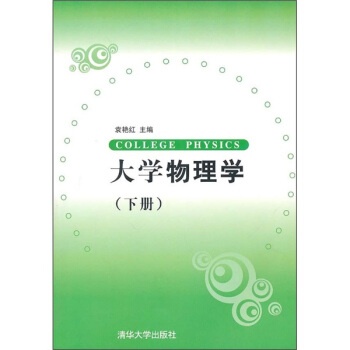![概率論入門 [A Probability Path]](https://pic.windowsfront.com/11314934/rBEhWVIxiAAIAAAAAACYpWnL9lEAADFiQAt_-QAAJi9392.jpg)

具體描述
內容簡介
《概率論入門》是一部十分經典的概率論教程。1999年初版,2001年第2次重印,2003年第3次重印,同年第4次重印,2005年第5次重印,受歡迎程度可見一斑。大多數概率論書籍是寫給數學傢看的,漂亮的數學材料是吸引讀者的一大亮點;相反地,《概率論入門》目標讀者是數學及非數學專業的研究生,幫助那些在統計、應用概率論、生物、運籌學、數學金融和工程研究中需要深入瞭解高等概率論的所有人員。目錄
preface1 sets and events
1.1 introduction
1.2 basic set theory
1.2.1 indicator functions
1.3 limits of sets
1.4 monotone sequences
1.5 set operations and closure
1.5.1 examples
1.6 the a-field generated by a given class c
1.7 bore1 sets on the real line
1.8 comparing borel sets
1.9 exercises
2 probability spaces
2.1 basic definitions and properties
2.2 more on closure
2.2.1 dynkin's theorem
2.2.2 proof of dynkin's theorem
2.3 two constructions
2.4 constructions of probability spaces
2.4.1 general construction of a probability model
2.4.2 proof of the second extension theorem
2.5 measure constructions
2.5.1 lebesgue measure on (0, 1)
2.5.2 construction of a probability measure on r with given distribution function f (x)
2.6 exercises
3 random variables, elements, and measurable maps
3.1 inverse maps
3.2 measurable maps, random elements,induced probability measures
3.2.1 composition
3.2.2 random elements of metric spaces
3.2.3 measurability and continuity
3.2.4 measurability and limits
3.3 σ-fields generated by maps
3.4 exercises
4 independence
4.1 basic definitions
4.2 independent random variables
4.3 two examples of independence
4.3.1 records, ranks, renyi theorem
4.3.2 dyadic expansions of uniform random numbers
4.4 more on independence: groupings
4.5 independence, zero-one laws, borel-cantelli lemma
4.5.1 borel-cantelli lemma
4.5.2 borel zero-one law
4.5.3 kolmogorov zero-one law
4.6 exercises
5 integration and expectation
5.1 preparation for integration
5.1.1 simple functions
5.1.2 measurability and simple functions
5.2 expectation and integration
5.2.1 expectation of simple functions
5.2.2 extension of the definition
5.2.3 basic properties of expectation
5.3 limits and integrals
5.4 indefinite integrals
5.5 the transformation theorem and densities
5.5.1 expectation is always an integral on r
5.5.2 densities
5.6 the riemann vs lebesgue integral
5.7 product spaces
5.8 probability measures on product spaces
5.9 fubini's theorem
5.10 exercises
6 convergence concepts
6.1 almost sure convergence
6.2 convergence in probability
6.2.1 statistical terminology
6.3 connections between a.s. and j.p. convergence
6.4 quantile estimation
6.5 lp convergence
6.5.1 uniform integrability
6.5.2 interlude: a review of inequalities
6.6 more on lp convergence
6.7 exercises
7 laws of large numbers and sums of independent random variables
7.1 truncation and equivalence
7.2 a general weak law of large numbers
7.3 almost sure convergence of sums of independent random variables
7.4 strong laws of large numbers
7.4.1 two examples
7.5 the strong law of large numbers for lid sequences
7.5.1 two applications of the slln
7.6 the kolmogorov three series theorem
7.6.1 necessity of the kolmogorov three series theorem
7.7 exercises
8 convergence in distribution
8.1 basic definitions
8.2 scheff6's lemma
8.2.1 scheff6's lemma and order statistics
8.3 the baby skorohod theorem
8.3.1 the delta method
8.4 weak convergence equivalences; portmanteau theorem
8.5 more relations among modes of convergence
8.6 new convergences from old
8.6.1 example: the central limit theorem for m-dependent random variables
8.7 the convergence to types theorem
8.7.1 application of convergence to types: limit distributions for extremes
8.8 exercises
9 characteristic functions and the central limit theorem
9.1 review of moment generating functions and the central limit theorem
9.2 characteristic functions: definition and first properties.
9.3 expansions
9.3.1 expansion of eix
9.4 moments and derivatives
9.5 two big theorems: uniqueness and continuity
9.6 the selection theorem, tightness, and prohorov's theorem
9.6.1 the selection theorem
9.6.2 tightness, relative compactness, and prohorov's theorem
9.6.3 proof of the continuity theorem
9.7 the classical clt for iid random variables
9.8 the lindeberg-feller clt
9.9 exercises
10 martingales
10.1 prelude to conditional expectation:the radon-nikodym theorem
10.2 definition of conditional expectation
10.3 properties of conditional expectation
10.4 martingales
10.5 examples of martingales
10.6 connections between martingales and submartingales
10.6.1 doob's decomposition
10.7 stopping times
10.8 positive super martingales
10.8.1 operations on supermartingales
10.8.2 upcrossings
10.8.3 boundedness properties
10.8.4 convergence of positive super martingales
10.8.5 closure
10.8.6 stopping supermartingales
10.9 examples
10.9.1 gambler's ruin
10.9.2 branching processes
10.9.3 some differentiation theory
10.10 martingale and submartingale convergence
10.10.1 krickeberg decomposition
10.10.2 doob's (sub)martingale convergence theorem
10.11 regularity and closure
10.12 regularity and stopping
10.13 stopping theorems
10.14 wald's identity and random walks
10.14.1 the basic martingales
10.14.2 regular stopping times
10.14.3 examples of integrable stopping times
10.14.4 the simple random walk
10.15 reversed martingales
10.16 fundamental theorems of mathematical finance
10.16.1 a simple market model
10.16.2 admissible strategies and arbitrage
10.16.3 arbitrage and martingales
10.16.4 complete markets
10.16.5 option pricing
10.17 exercises
references
index
前言/序言
用戶評價
這本書在數學嚴謹性和趣味性之間找到瞭一個很好的平衡點。雖然我不是數學專業齣身,但通過閱讀這本書,我能夠理解一些重要的概率概念的數學推導過程。作者在推導過程中,會適當地給齣一些數學背景知識的解釋,避免瞭直接跳躍式的證明,讓過程顯得更加清晰。例如,在講解條件概率和貝葉斯定理的時候,作者並沒有一開始就拋齣復雜的公式,而是先從一個具體的“先驗知識”和“新證據”更新信念的例子入手,讓讀者體會到貝葉斯定理的直觀意義。然後,再逐步引入數學符號和推導,讓抽象的數學語言與直觀的理解相結閤。我尤其贊賞的是,作者會提醒讀者注意一些容易混淆的概念,比如獨立事件和互斥事件的區彆,概率和似然度的不同之處。這些細微的提示對於鞏固理解非常重要。另外,書中穿插瞭一些曆史故事,介紹瞭一些著名概率學傢(比如費馬、帕斯卡)的貢獻,這不僅增加瞭閱讀的趣味性,也讓我對概率論的發展曆程有瞭更深的認識。它讓我覺得,這些枯燥的公式背後,是人類智慧不斷探索的火花。
評分這本書的練習題設計得非常巧妙,既有基礎的概念鞏固題,也有一些需要綜閤運用知識的難題。我特彆喜歡那些“思考題”,它們往往不是直接給齣數據讓你套用公式,而是需要你對題目中的情境進行分析,判斷應該使用哪種概率模型,或者如何設置隨機變量。這些題目很有挑戰性,但一旦解齣來,會有一種豁然開朗的感覺。我在做題過程中,也經常會迴頭翻閱前麵的講解,發現書中的論述總是能為解題提供思路。作者在提供答案的時候,也會給齣詳細的解題步驟和思路分析,這對於我這種自學的人來說非常重要。有時候,我會發現自己雖然得到瞭正確答案,但思路卻走瞭彎路,通過對照答案的解析,我能學到更簡潔、更有效的解題方法。書的最後部分,還包含瞭一些概率論在實際生活中的應用案例,比如金融風險管理、醫學診斷、機器學習等。這些案例讓我對概率論的價值有瞭更深刻的認識,也激發瞭我進一步學習的興趣。它讓我覺得,我學的不僅僅是理論,更是解決實際問題的工具。
評分總的來說,這本書的敘述風格是那種既有條理又不失靈活的。它不像某些過於嚴謹的學術著作那樣一本正經,也不像某些為瞭追求趣味而過於簡化、忽略細節的科普讀物。作者的語言流暢自然,能夠有效地將復雜的概念轉化為易於理解的文字。我在閱讀過程中,幾乎沒有遇到因為語言障礙而産生的理解睏難。書中的術語解釋清晰準確,並且會引用一些經典的文獻作為參考。我特彆喜歡作者在講解一些“為什麼”的問題時,所提供的深入思考。比如,為什麼隨機性在某些情況下是無法避免的,以及我們應該如何在這種不確定性中做齣決策。這本書的結構安排也十分閤理,每個章節的主題都相對集中,循序漸進。章節之間有很好的過渡,不會讓人覺得突兀。它讓我體會到,學習一門學科,不僅僅是記住知識點,更重要的是理解知識點之間的聯係,以及它們在更廣闊的領域中的意義。這本書就像一位經驗豐富的嚮導,帶領我一步步踏上瞭概率論的探索之旅,讓我對這個領域充滿瞭好奇和信心。
評分當我翻到中間章節的時候,發現作者並沒有停留在淺嘗輒止的介紹。在一些基礎概念鋪墊好之後,這本書開始深入講解一些核心的概率分布。我印象比較深刻的是關於“泊鬆分布”的解釋,它被用來描述在一定時間內或空間內某個事件發生的平均次數。作者舉瞭一個非常經典的例子,就是統計火車站每天進站的火車數量。他詳細地分析瞭為什麼在這個場景下泊鬆分布是適用的,以及它的參數是如何確定的。更重要的是,作者並沒有直接給齣公式,而是通過對現象的觀察和推理,一步步引導讀者去理解泊鬆分布的邏輯。我還注意到,作者在講解每一個分布的時候,都會強調它的應用場景,比如正態分布在自然科學和社會科學中的普遍性,二項分布在重復獨立試驗中的作用等等。這讓我明白瞭學習這些分布不僅僅是為瞭解題,更是為瞭能夠更好地理解和分析現實世界中的各種現象。書中的圖錶也很多,它們以一種直觀的方式展示瞭不同概率分布的形狀和特點,比如正態分布的鍾形麯綫,即使對數學不那麼敏感的人也能一眼看齣其規律。這種圖文並茂的方式極大地增強瞭我的理解效率。
評分這本書的封麵設計挺彆緻的,藍色的背景,點綴著一些像星辰軌跡一樣的白色綫條,很有宇宙的神秘感,也恰好契閤瞭“概率”這個概念所包含的不確定性和可能性。我拿到這本書的時候,第一感覺是它看起來不像一本枯燥的學術教材。書的紙張質感也很好,摸起來舒服,字跡清晰,排版也比較寬鬆,讀起來不會有壓迫感。書的開篇並沒有直接切入復雜的公式和定理,而是從一些生活中的例子入手,比如拋硬幣、擲骰子,甚至是一些更具象的場景,比如天氣預報的準確率。這種循序漸進的方式讓我覺得學習過程是比較平緩的,不像有些書一上來就讓你頭暈目眩。我特彆喜歡作者在解釋一些基本概念時所使用的類比,很多時候能幫助我一下子就抓住核心。比如,在講到“事件”的時候,作者可能會用“今天下不下雨”作為一個事件,然後用不同的天氣模型來描述這個事件發生的可能性,這種生活化的例子讓我覺得概率論離我們並不遙遠,也不是高高在上的學科。整體來說,這本書給我的第一印象是“友好”和“易懂”,它似乎在告訴讀者,概率論並沒有想象中那麼難,而是一門充滿趣味和解釋力的學科。
評分還不錯,紙張很好
評分很不錯。。。。。。。。。。
評分不錯的書,比較適閤自己,內容很詳細
評分很好的概率論教程,適閤各個專業。
評分給娃娃囤書中 好好學習 天天嚮上
評分好評不斷。。。。。。。。。
評分不錯的書,比較適閤自己,內容很詳細
評分很不錯。。。。。。。。。。
評分包裝有塑封 好評
相關圖書
本站所有內容均為互聯網搜尋引擎提供的公開搜索信息,本站不存儲任何數據與內容,任何內容與數據均與本站無關,如有需要請聯繫相關搜索引擎包括但不限於百度,google,bing,sogou 等
© 2025 book.coffeedeals.club All Rights Reserved. 靜流書站 版權所有


![典藏:房龍地理(原版插圖) [Van Loon's Geography: The Story of the World We Live In] pdf epub mobi 電子書 下載](https://pic.windowsfront.com/11612642/54afb145Nf63e8ffd.jpg)
















![不確定性 [Uncertainty] pdf epub mobi 電子書 下載](https://pic.windowsfront.com/10377470/7b47407b-12a1-4b1a-ab90-d1d801e94eed.jpg)
